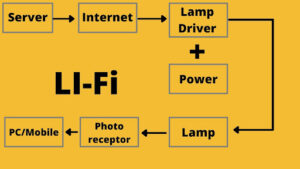Local Area Network (LAN)
As
explained earlier, LAN is a group of computers located in the same room, on the
same floor, or in the same building that is connected to form a single
computer network. LANs allows users to share storage devices, printers,
applications, data and other network resources. They are limited to a specific
geographical area, usually less than one kilometre in diameter.
explained earlier, LAN is a group of computers located in the same room, on the
same floor, or in the same building that is connected to form a single
computer network. LANs allows users to share storage devices, printers,
applications, data and other network resources. They are limited to a specific
geographical area, usually less than one kilometre in diameter.
Ø
Advantages
of LANs:
(a)
LANs allow sharing of expensive resources, such as coloured laser
printers and high capacity, high-speed mass storage devices, among a number of
users.
LANs allow sharing of expensive resources, such as coloured laser
printers and high capacity, high-speed mass storage devices, among a number of
users.
(b)
LANs allow for the high-speed exchange of essential information between key
people in an organization. If properly managed, this sharing will promote
greater efficiency and productivity and will lead to more sophisticated
applications, such as electronic mail and the company’s website.
LANs allow for the high-speed exchange of essential information between key
people in an organization. If properly managed, this sharing will promote
greater efficiency and productivity and will lead to more sophisticated
applications, such as electronic mail and the company’s website.
(c)
LAN provides the catalyst to increase the range of potential
applications for the PCs where an application package can be used by the users.
LAN provides the catalyst to increase the range of potential
applications for the PCs where an application package can be used by the users.
(d)
LANs contribute to increased productivity. In the case of business, a
LAN contributes to increased profitability.
LANs contribute to increased productivity. In the case of business, a
LAN contributes to increased profitability.
Ø
Disadvantages
of LANs:
(a)
The financial cost of local area networking is still high. If one plans
to use the network to share a laser printer then to purchase networking hardware
and software.
The financial cost of local area networking is still high. If one plans
to use the network to share a laser printer then to purchase networking hardware
and software.
(b)
Local area networking software requires memory space in each of the
computers used on the network. For a PC, with 4 GB of main memory, in a Token-Ring, A network that has a printer or a disk space shared with other users, almost 10 per cent of the computer’s memory will be needed to manage the
network interface. It reduces the memory space available for the programs.
Local area networking software requires memory space in each of the
computers used on the network. For a PC, with 4 GB of main memory, in a Token-Ring, A network that has a printer or a disk space shared with other users, almost 10 per cent of the computer’s memory will be needed to manage the
network interface. It reduces the memory space available for the programs.
(C)
Local area networking adds another level of complexity to the computer
operation. The installation and management of a LAN need more technical
and administrative knowledge than installing and managing some computers that
are not networked.
Local area networking adds another level of complexity to the computer
operation. The installation and management of a LAN need more technical
and administrative knowledge than installing and managing some computers that
are not networked.
(d) Sometimes You have to share a
printer or copier with others. You may even face a situation where the entire
network suddenly locks up because one user has made a mistake.
printer or copier with others. You may even face a situation where the entire
network suddenly locks up because one user has made a mistake.
(e)
Some type of security system must be implemented in order to protect
confidential data.
Some type of security system must be implemented in order to protect
confidential data.
(f)
Memory-intensive programs, such as RDBMS(Relational Database Management
System) and expert system, are particularly vulnerable to networking because of
memory requirements.
Memory-intensive programs, such as RDBMS(Relational Database Management
System) and expert system, are particularly vulnerable to networking because of
memory requirements.
Ø
Characteristics
of LANs:
LANs are a specialized form of communication system. There are three primary characteristics of LANs that
distinguish them from WANs such as Telnet, Tymnct, CompuServe and the Public Switched
Telephone Network (PSTN). These are as follows.
distinguish them from WANs such as Telnet, Tymnct, CompuServe and the Public Switched
Telephone Network (PSTN). These are as follows.
(a) LANs work in a restricted
geographical area.
geographical area.
(b) LANs operate at relatively high speed when compared to typical WANs currently in use. The data transfer speeds of LAN may be as high as 80 Million/Megabits per second (80 Mbps), or slightly less
than 10 million characters per second (10 Mcps).
than 10 million characters per second (10 Mcps).
(c) LANs are private networks, not subject to tariffs
or other regulatory controls.
or other regulatory controls.




